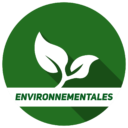Long ignored and plundered by essentially capitalist exploitation, Africa’s natural capital is now emerging as a guarantee of a green economy and an opportunity for global climate action. Studied, quantified and sustainably developed, the potential of Africa’s natural capital offers opportunities that complement private capital flows and official development assistance.
Today, Africa is at a crossroads in terms of mobilising the financial resources needed to achieve its sustainable development ambitions, and to combat and adapt to climate change. The continent must choose between nature-based financing approaches and traditional financing models that have become obsolete.
According to estimates by the Organisation for Economic Co-operation and Development (OECD), official development assistance has stagnated significantly since 2010, even falling to its lowest level in Africa, reaching 34 billion dollars in 2022. Access to international capital markets, meanwhile, has remained fairly restrictive and very costly due to investors’ high perception of risk. However, Africa, which needs $33 billion a year to adapt to climate change, is currently receiving only around $6 billion, according to data from the African Development Bank (AfDB).
Yet Africa is not short of options. As well as mobilising the private sector, it could take advantage of its enormous potential in terms of natural capital. This asset represents between 30% and 50% of the total wealth of African countries, although it is not often taken into account in economic measures such as the calculation of gross domestic product (GDP). Yet this capital offers essential assets for promoting inclusive, green growth in the face of climate change.
A rich and varied potential
Natural capital is made up of everything in ecosystems, with the exception of people and their property. It includes all the natural resources that are directly useful to humans or that they can develop technically and economically, such as water, energy, forests, mineral deposits, agricultural land and fisheries. It also includes hidden ecosystem services, such as air and water quality, protection against natural disasters, pollution control, pollution elimination and wildlife habitat.
Data compiled by the AfDB demonstrate the wealth of Africa’s natural capital. Around 30% of all the world’s mineral reserves are found on the continent, including 60% of cobalt reserves and 90% of platinum group metal reserves. The continent makes a substantial contribution to the world’s annual production of six key minerals: 80% of platinum, 77% of cobalt, 51% of manganese, 46% of diamonds, 39% of chromium and 22% of gold.
The continent also holds 7% of the world’s natural gas and oil reserves. In addition, Africa has over 60% of the world’s undeveloped arable land and is home to 13% of the world’s population, 60% of whom are under the age of 25, making it the world’s youngest population. Around 75% of African countries have access to the sea, offering huge opportunities in the blue economy, whose global potential, if managed sustainably, is estimated at around 1,500 billion dollars.
The climate component
In Central Africa, for example, natural capital offers many more opportunities. This means making sustainable use of the potential of the Congo Basin, which covers 530 million hectares, 70% of Africa’s forest cover, 6% of the world’s forest area and 91% of Africa’s dense rainforests. In terms of energy, the Congo Basin represents 17 million megawatts of renewable energy potential and almost 125,000 megawatts of hydroelectricity.
As the world’s second largest forest (after the Amazon), the Congo Basin absorbs 750 million tonnes of CO2 every year, according to the Central African Forest Commission (COMIFAC). This decisive role in global climate regulation can be used by countries in the sub-region to negotiate debt-for-nature contracts. This technique, invented by the American biologist Thomas Lovejoy, considered to be the godfather of biodiversity, ultimately consists of exchanging part of the foreign debt for local investments aimed at protecting the environment. The debt-for-nature swap is often presented as a debt relief technique for developing countries. It involves extending payment terms, reducing interest rates, granting new loans at lower rates than conventional, and even cancelling debts.
The debt-for-nature mechanism has been expanding in Africa for some time. In June 2023, Portugal announced that it would swap $153 million of Cape Verde’s debt for investments in nature. At the beginning of August 2023, Gabon concluded its own agreement, worth 450 million dollars with the Bank of America (BofA), for the protection of part of its marine ecosystem. This is the second operation of its kind on the continent after the Seychelles.
The AfDB Initiative
To improve the way natural capital is taken into account on the continent, on 9 September 2021 the AfDB launched a new initiative on integrating natural capital into development finance in Africa (Natural Capital for African Development Finance, NC4-ADF).
This 2-year programme promotes best practices for integrating natural capital into the development finance architecture. Another focus is on how to get rating agencies to integrate green growth and natural capital considerations into sovereign risk and credit ratings for African countries.
NC4-ADF is supported by the World-Wide Fund for Nature (WWF), the German Federal Ministry for Economic Cooperation and Development (BMZ) through its dedicated agency (Deutsche Gesellschaft für Internationale Zusammenarbeit, GIZ), the United Nations Environment Programme (UNEP), the Mava Foundation, the International Institute for Sustainable Development (IISD) and the Economics for Nature (E4N) partnership, which aims to put natural capital at the heart of economies.
Fanta Mabo

